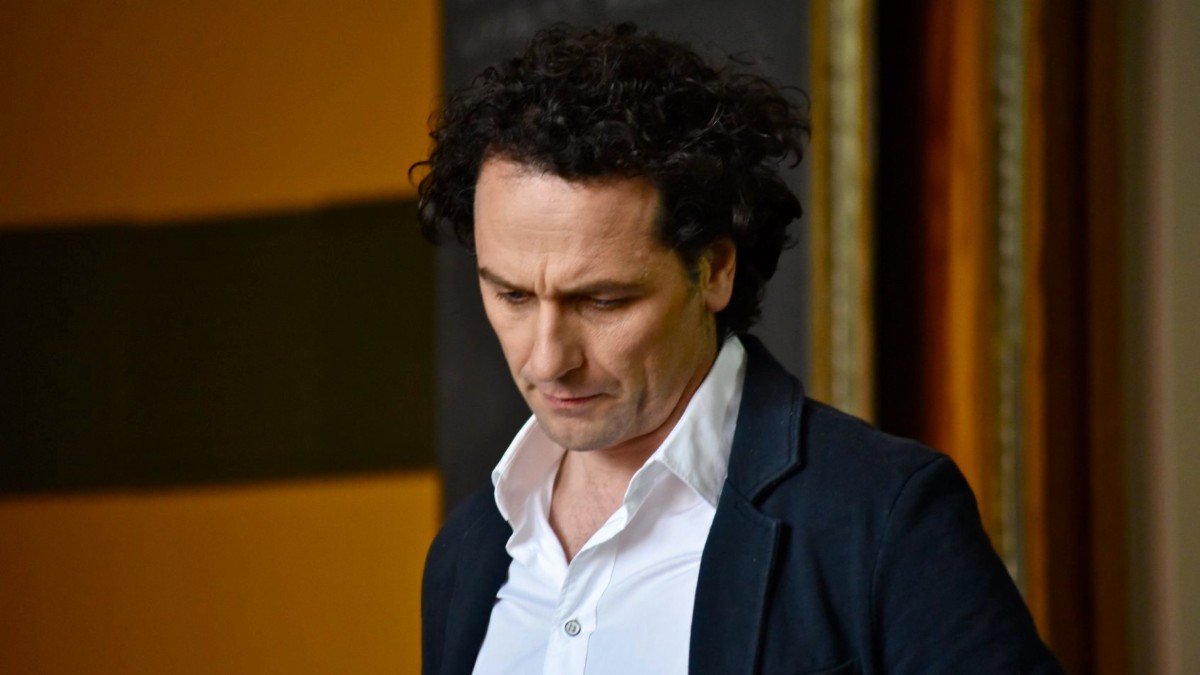
A Case Study
Narrative | Dramatic Features
Film Name: The Violin
Genre: Drama
Date: Principal photography March 2019, and Post-production in October 2019
Director: Jon Rosenbloom
Producer: Xavier A Santiago
Writer: Jon Rosenbloom
Cinematographer: Adrian Peng Correia
Production Company: Saint Productions
Budget: Enough
Financing: Self
Shooting Format: RED Cinema 1.85:1
Screening Format: DCP, 4K digital
World Premiere: Holly Shorts 2020
Awards: N/A
Website: http://saintproductions.com/portfolio/the-violin/
indieactivity: What is your film about?
Jon Rosenbloom (JR): Read “Jon Rosenbloom Directorial Musing on the making of The Violin”
Tell us about the festival run, marketing and sales?
Jon Rosenbloom (JR): We got our World Premiere at Holly Shorts, 2020 last week. Festivals often cater to their audiences with programming that reflects current events and that year’s festival focus. With our introspective story that allows for the imagination to drift post credits, we realize it’s not the traditional festival red meat, even with Matthew Rhys. In today’s political climate, our expectations were grounded. To be honest, we get that it took a while to find a home. But, the ball’s rolling …
Give the full Official Synopsis for your film?
Jon Rosenbloom (JR): A recent divorcee returns to his childhood middle school hoping to do a good deed. Pathos ensues.
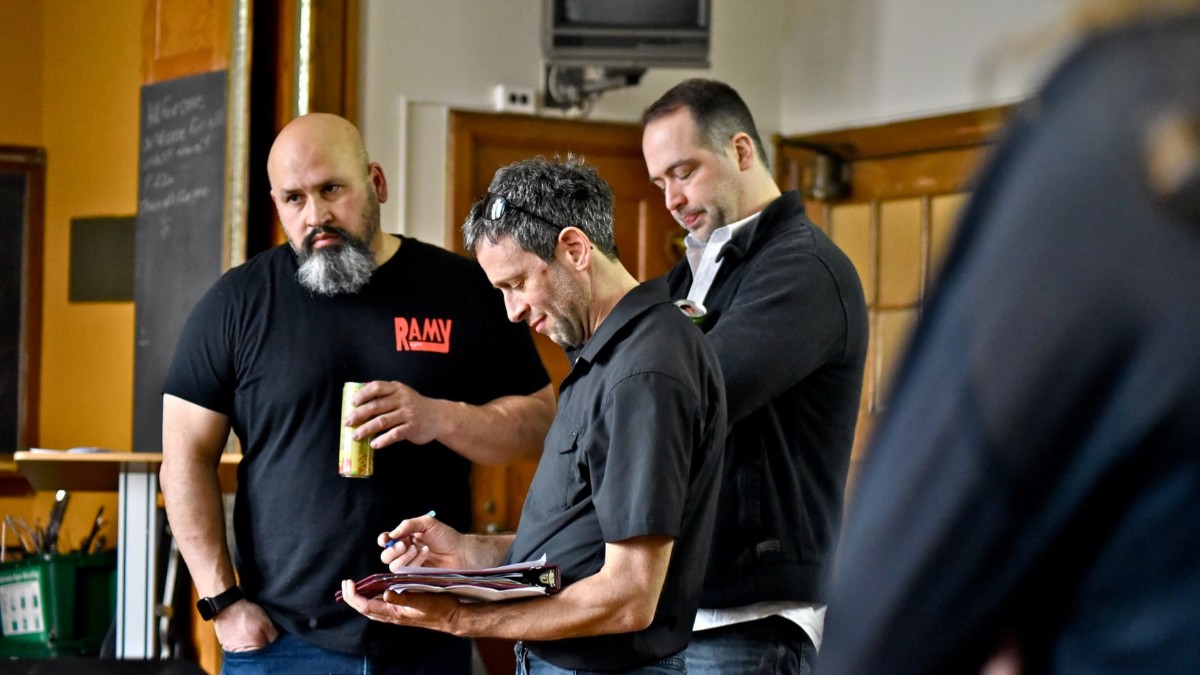
Development & Financing?
Jon Rosenbloom (JR): I first sent this script to my producer Xavier while he was living in London. He thoroughly enjoyed the script. He was finishing a film with Sarah Kestelman. Knowing that I was working on The Americans, he asked me to approach Matthew Rhys. Years passed and as I expressed in my directorial musings, we see the final product.
Production?
Jon Rosenbloom (JR): As I mention in my directorial musings, the ball got rolling when I finally worked up the gumption to ask Matthew Rhys to read the script. Months, and a few reminders, passed before he took a look, but, once he said yes, Xavier and I were into production mode. Casting the other roles was the next step. I had always wanted to cast against type for the music teacher. In such a brief film, I had to give as much life as possible to every element. (The music teacher looks like his real calling is Judo, the janitor is a slavic woman.) By then, I was the A-Camera Dolly Grip on “The Enemy Within.” I thought I would ask Morris Chesnut, but I didn’t think I could handle two stars in one self-financed short. I did, however, ask Morris’s stunt double, who declined, but told me to take a look at Malcolm Murray. Malcolm’s reel was mostly tough guys, but there was one stretch where he smiled. Technically, he’s the “bad guy,” in the film; but he’s not really a “bad guy.” He’s just the oddly intimidating music instructor, with his own prerogatives.
Next casting was young Robert. As a dolly grip, I’ve seen so many actors fake playing musical instruments, and I’m not a fan – don’t get my producer started on it either (massive pet peeve alert). You’ll note that every instance of music in The Violin actually occurs in the film. So, we wanted a young fellow who actually plays. That narrowed things down a lot. Also, he had to look like maybe he could grow up to look like our adult lead. My producer connected with a school that had a violin program with several accomplished students and Harrison fit the bill. The casting Harrison was fortuitous in the fact that his father is a professional musician. However, this was the biggest gamble in the production. He’d never been on set before.
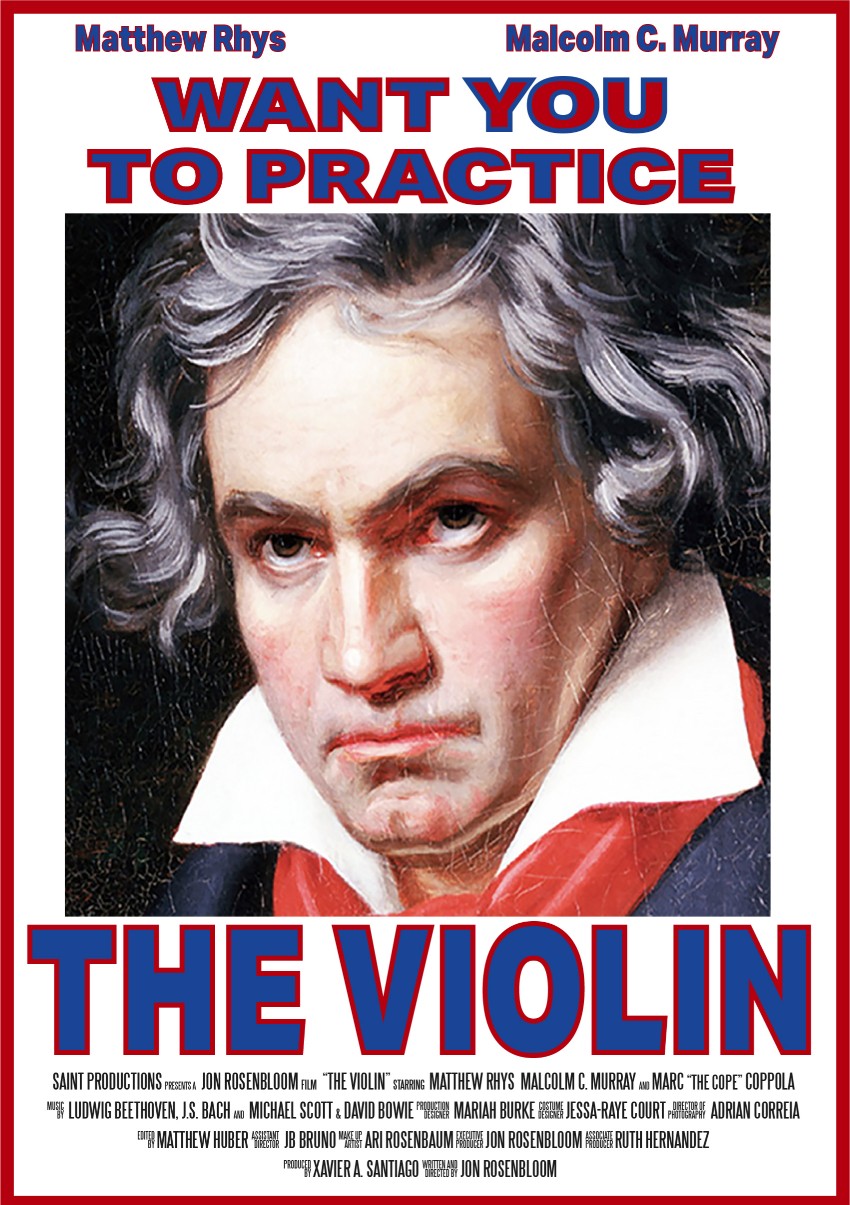
Our industry typically says the most difficult performers to work with are youth and animals. My producer had produced projects with both, as had the crew. I told him to warm up, and just play, focus on the sheet music, and think about those times when the music gets challenging – don’t be perfect, be you. The role of the Mother was filled years ago by my friend Martha Pinson, who was an early encourager of our efforts. (And, it didn’t hurt that as a script supervisor she had actually read offscreen lines for a very emotional scene with Kerri Russell.) Finally, Xavier asked me if I would like “The Cope” to do the Radio Announcer spot. For those of us who still listen to the radio, Marc “The Cope” Coppola is a famous DJ and also the nephew of Francis Ford Coppola. Things were coming together…
That said, production hinged on Matthew’s availability. At the beginning of March, he said, “Ok, I can give you any Thursday this month.” After years of talk, we were 3 weeks from shooting. Xavier should take over the narrative at this point because it was his time to shine. Xavier always maintains that this is where science and art merge. He secured our locations and lined up our excellent visual team of H/MU, Wardrobe, Production Design, and our steady hand at the camera, Adrian Correia (Love Life, GLOW, Rahmi.) We’re both great believers in thorough scouting, photo-boarding, making diagrams of each scene. It’s a short film with no deadline; there’s no reason not to do your homework.
You initially work with the locations you scouted, which you believe and hope will serve as an unspoken character(s) in the story. Most of the time locations are a transactional relationship but with independent films and short films especially, it’s about relationships. Because of Xavier’s work with a Catholic school in the Bronx, we were able to use that location for the primary scenes.
We found a house nearby but then two weeks before filming, the person canceled. Luckily, one of Xavier’s dear friends, who resides in the Village of Malverne, offered his home. Anyone in this business knows how bad film crews can be on locations. Our crew was one of the exceptions. After restoration and repainting of the “hero bedroom”, we managed to not destroy Xavier’s relationship. But the icing on the cake was how the Village of Malverne, through my producer’s seasoned tongue, gave us the garbage truck for free. The only argument was that Xavier wanted the truck to roll in and have the Garbage Man hop off; this isn’t a Michael Bay film.
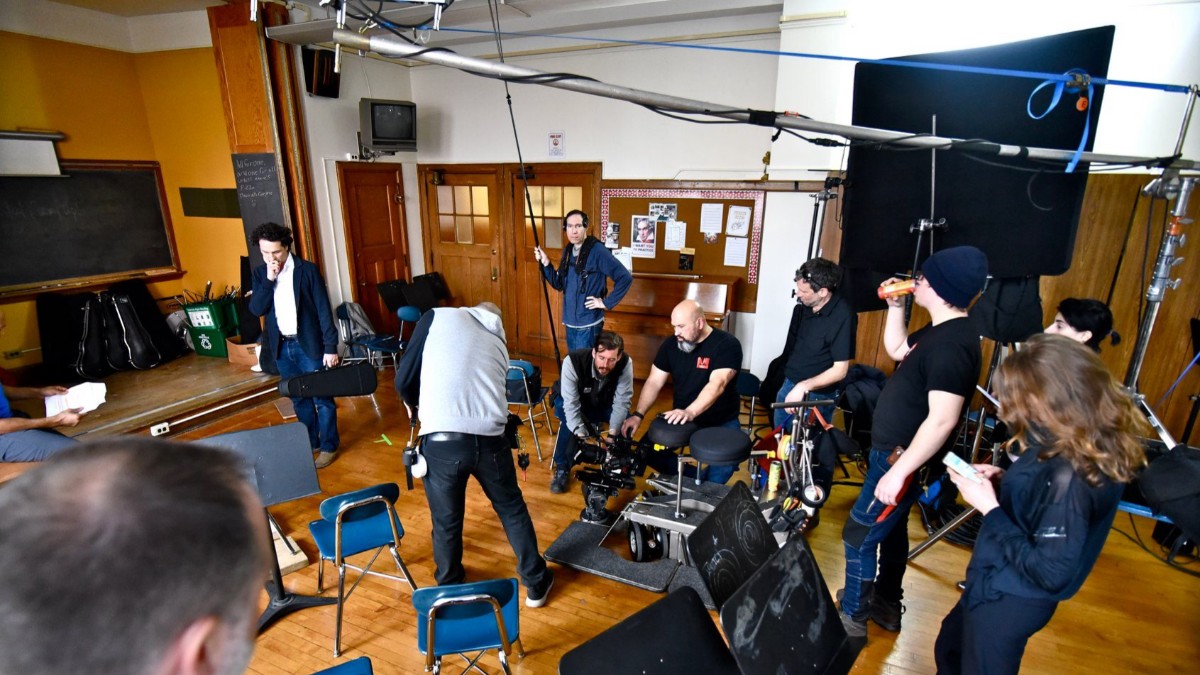
Practice makes Perfect: Rehearsing our two leads was non-negotiable, and happened the Monday before filming. I had already scouted the classroom, so we were able to block the scene almost to scale. A couple of cracks at it, and the scene really started working. It seemed like this film might actually work! The irony is that we lost our production manager the week of the shoot. But no one knew because Xavier kept everything flowing smoothly. The biggest hiccup on our shooting days was lunch arriving slightly late on Day 1, but it was worth the wait.
Once we got the footage synched, I began the assembly, with the intention of putting it together, and then letting a proper editor clean up the mess I had made. Of course, we rushed to show some people even the roughest of cuts. I don’t really like notes that go beyond “were you engaged? Did you feel something?” (If someone thinks a line should have been different, then they can write their own script.) That said, we got some very useful notes. Julia Kots (Inez, Doug & Kira) got me to calm down my editing, which makes sense for the film; the simpler, the better. Also, she had some excellent suggestions about working the performances through the editing. The rest of the post was probably typical for filmmakers who have day jobs. I was pushing A-Camera Dolly on The Plot Against America, which was a big, intense job. So, a morning here, a day there, which is not a bad way to do it, because it lets you refresh your eyes and ears each step of the way.
We had to record the Bach Violin Sonata for the end of the film. Again, a film crew acquaintance put us in touch with his younger sister, who was studying music in college. Even though I knew the piece from Hillary Hahn, I didn’t want a virtuoso. We recorded Winona Murphy in Xavier’s office, and it really sounds like someone young, at home, striving to master a really difficult piece.
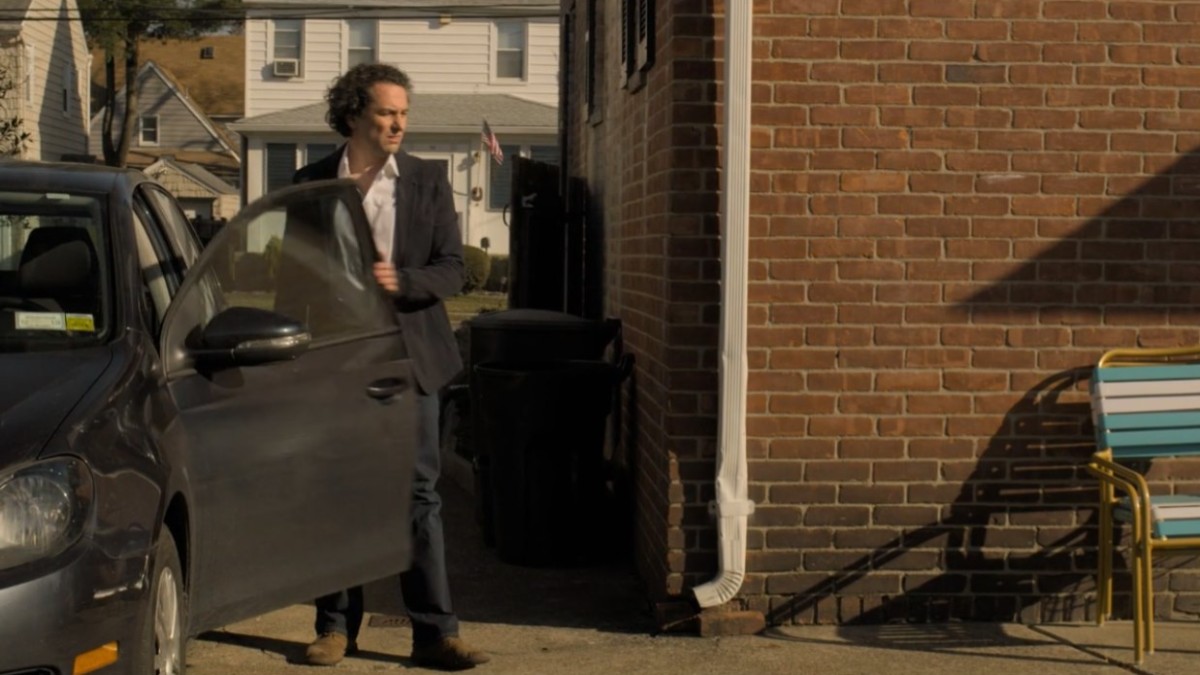
Festival Preparation & Strategy?
JR: We started with the fall deadlines of Oscar Qualifying festivals. Each festival received a cover letter, and ,when possible, a follow up phone call to confirm receipt. Those festivals where we had existing relationships, we contacted personally to submit. After we submitted, we crossed our fingers. Is that not a strategy? It’s a work in progress.
The Release?
JR: We are still on the festival circuit.
Advice from the Filmmaker?
JR: Advice from the Director: Making a film is a big undertaking. If you’re making an indie short, don’t be superficial. Understand the emotional narrative that drives the project, then rip your heart open and be as true to those emotions as you can. Go there. Otherwise, you’re wasting your time and someone’s money.
Also, no one else knows the film, and your intentions, as intimately as you. Write stuff down, and communicate as much as you can.
Advice from the Producer: Film is a collaborative process. Having been on both sides of the camera and being mentored by some positive, longstanding industry professionals, it all begins with respect. When you have the story you desire to tell, work with the entire team. Absorb all of their feedback. They want to see your film happen but you need them to empower the process. That’s where a long runway for planning comes into play. Don’t rush, ever! That’s when accidents happen. Always have a plan from A to Z and back again; this will allow you to pivot when the inevitable occurs. Onus: We are all human and we make mistakes. If you make a mistake, own it. That is a leadership skill that all crews appreciate. From there you can create durable working relationships.
Tell us what you think of the Case Study for THE VIOLIN What do you think of it? Let’s have your comments below and/or on Facebook or Instagram! Or join me on Twitter.
Follow Jon Rosenbloom on Social Media
Website
IMDb
Facebook
Instagram
Vimeo
MORE STORIES FOR YOU









